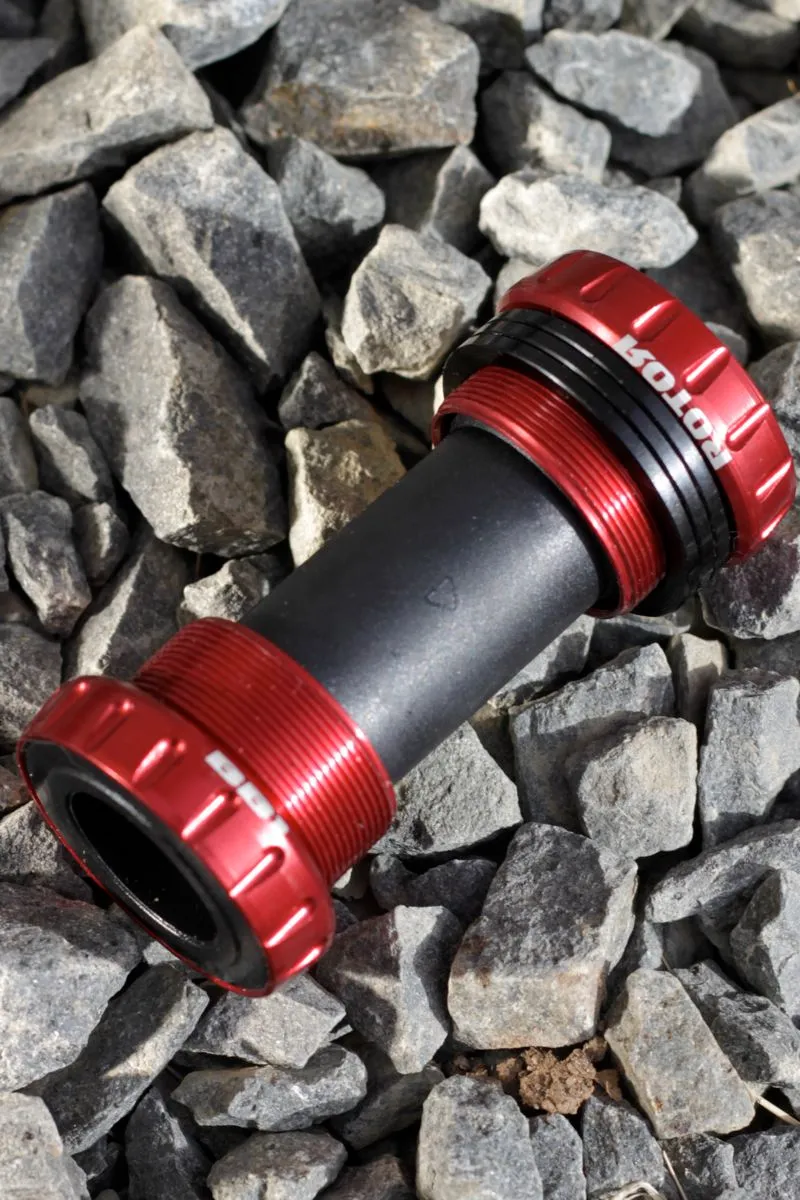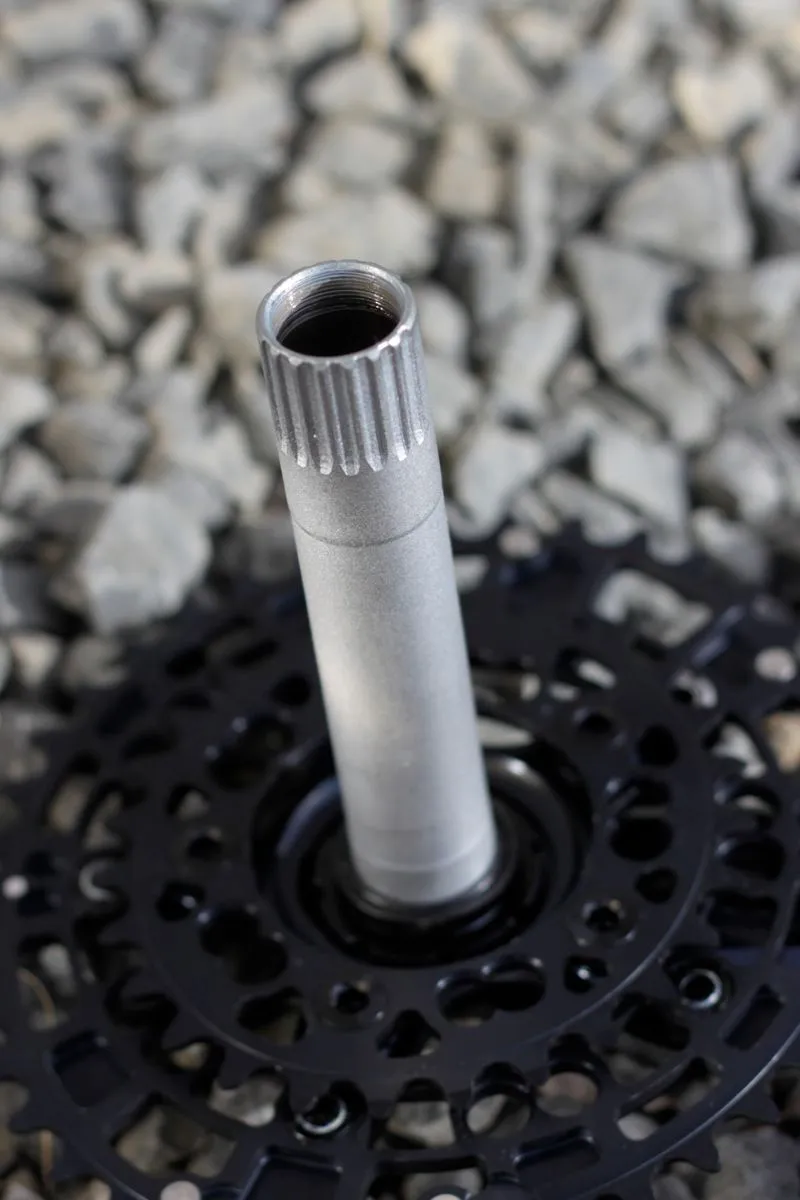Rotor’s 3D mountain bike crank combines hollow arms, which the Spanish manufacturer designed to hold up under the power of the world’s best ProTour road sprinters, with its world championship winning 40/27-tooth double mountain bike chainring configuration.
The new arms are CNC machined out of an extruded piece of 7075-T6 aluminum. Rotor’s ‘Trinity Drilling System’ refers to the three bores drilled down the length of the arms, which is said to save weight without sacrificing stiffness. Thor Hushovd, Carlos Sastre and other select members of the Cervélo Test Team put prototypes of the 3D arms to the test in the 2009 Giro d'Italia and through the latter half of last year's road season.
As for the other half of this equation, Burry Stander (Specialized Factory Team) used Rotor’s Q-Rings in a 40/27-tooth mountain bike double ring configuration, albeit mated to Specialized S-Works carbon crank arms, to win the under-23 world mountain bike championship in 2009 in Canberra, Australia.
The 3D mountain bike crank is available with a steel or titanium spindle and with the option of a double or triple ring spider. Rotor manufacturers two bottom brackets BB1 and SABB (which features self-aligning bearings), to complement its cranks. Each unit is offered with the option of standard steel or ceramic bearings.

The new crank uses a pinch bolt clamping design as opposed to the older Ágilis crank’s DTT Evo micro-adjustment system. The new single bolt clamp makes the system much simpler to install and easier to adjust.

“The [Cervélo Test Team] mechanics are constantly messing with them, so we needed to make it more user friendly,” said Kervin Quinones, Rotor’s US general manager. “That was the number one goal of the new design.”
The complete package, as furnished for testing, including the 3D crank with 175mm arms, steel spindle and double spider, 40/27-tooth Q-Rings and BB1 ceramic bottom bracket weighs a total of 767-grams and costs $US832/€537/£508 .
We’ve been riding Rotor’s older model Ágilis MTB double ring crank for a year with favorable results. The new crank looks to build upon the previous version’s benefits, but look for a detailed test and comparison of the new 3D model in the coming months onBikeRadar.com.

